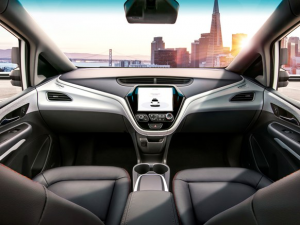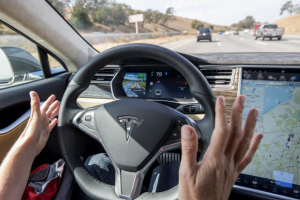

Posted: April 3, 2018
As our series of blog posts covering driverless cars draws to a close, I thought this was a fitting question to explore. In order to answer it, we need to dig a little deeper and ask some more specific questions.

www.bobatoo.co.uk Driverless car survey
The Motor Industry is dominated by news of autonomous vehicle developments. General Motors and Waymo are leading the race to get driverless cars on US roads as soon as possible. In fact, GM has set a target to have cars without steering wheels and pedals in mass production by 2019.
There is, however, a growing disparity between industry enthusiasm and consumer desire. A survey conducted by Bobatoo Insurance asking UK drivers about driverless cars found that 75% of drivers were either not bothered or were concerned about the prospect.
The driving force behind the development of autonomous cars comes from manufacturers, technology companies and Government policymakers.
The UK Government has estimated that the Driverless Car Industry will be worth £50bn to the British economy by 2035. Transport Secretary Chris Grayling also confirmed in January that self-drive cars would soon be tested on Britain's roads. Millbrook Proving Ground, where our facility is based, has also recently announced that they are to become the UK’s first independent 5G test bed for CAV’s (Connected and Autonomous Vehicles).
Aside from the obvious financial implications, the main objectives behind the push for autonomous vehicles are to drastically reduce road accidents, car emissions and eliminate congestion.

Photo Credit: General Motors
Cruise, a technology start-up purchased by GM to run their driverless car division, is nipping at the heels of the more widely recognised leader in autonomous car development; Waymo.
The partnership between GM and Cruise gives them a unique advantage over Google's Waymo, by combining Cruise's technology with GM's manufacturing capabilities.
Driverless car prototypes by both leaders are racking up millions of miles in 'real-road' time, testing the cars in designated areas of Arizona and San Francisco. Cruise has even laid on a 'Robo-Car' service for a select number of their employees, who have access to their fleet of modified Chevrolet Bolt EV's. The cars are equipped with sensors, self-driving computers and software, and all cars also have a safety driver in place behind the wheel for testing.
Cruise's CEO, Kyle Vogt explains his risky decision to carry out a lot of his vehicle testing on San Francisco's busy city roads; 'While it seems crazy to test in an absurdly complex place like San Francisco, it’s absolutely necessary. We believe it’s the fastest way to achieve the level of performance and reliability needed to deploy self-driving cars at scale in a sustainable way, and that’s the only thing that matters.'

Photo Credit: David Paul Morris
You may have seen reports of a driverless car accident in the media recently, in which a driverless Uber car hit and tragically killed a pedestrian in Arizona. The accident raises important questions when reviewing the development and testing procedures in place.
All self-drive cars tested on public roads must have a vehicle operator in the car ready to take over controls in an emergency. However, as we touched upon in my previous blog post (Bypassing Level 3 Autonomy), there have been studies carried out that demonstrate how challenging it is for safety drivers to stay alert and respond quickly when potential hazards appear.
The need for very specialist driver training is evident in order to equip vehicle operators with the skills necessary to maintain a high level of concentration and risk assessment when not in control of the vehicle, as well as the capability to handle the car effectively in such a situation.
Despite not being popular amongst many petrolheads, driverless cars are definitely here to stay and we will start seeing a lot more of them on UK roads. However, I believe it will be a long time before we see a fully autonomous level 5 car driving alongside us on the M1.
These cars are incredibly intelligent and are learning fast, albeit that testing has been limited when you consider other variants such as anticipating human behaviour and also extreme weather conditions.
The autonomous vehicles currently being tested fall between level 3 and level 4 of vehicle autonomy (read more about the 5 levels of vehicle autonomy), meaning the car cannot perform in every driving scenario. It is still vital that an effective safety driver be present in the car at all times.
There is a huge leap to venture from level 4 to level 5, at which point there will be no backup controls or a safety driver. This leap isn't only in the necessary technical advancements that would be required, but also in our economy and road infrastructure as a whole.
Will we see autonomous vehicles on our roads in the next 5 years? - Yes. Will they actually be fully 'driverless'? - Not likely.
To find out more information about our Autonomous Safety Driver & Operator Training please call us for an informal chat today on 01234 757633 or email us at info@catdrivertraining.co.uk.
Call: 01234 757 633
Email: info@catdrivertraining.co.uk
CAT Driver Training is the fast way to develop & improve authentic dynamic driving skill, technique & knowledge from the Best. OEM recognised driver training for individuals & the motor industry. As the leading UK based independent advanced performance driving skills company, we exist to make your driving experience even better. Explore your cars potential, fulfill your own. Coaching advanced road & track skills, safety driver training courses for individual driving enthusiasts & advanced driving for all facets of the motor industry. The only training company resident within UTAC's Millbrook Proving Ground in Bedfordshire, within easy reach of London, & all surrounding counties: Hertfordshire; Buckinghamshire; Oxfordshire; Nottinghamshire; Cambridgeshire; Norfolk; Suffolk; Essex; & Surrey. Clients travel from the World over & the UK to learn from the authentic evidence based dynamic driving & vehicle dynamic experts. | All Rights Reserved | Copyright 2005 – 2025
Some of the links we use are affiliate links. This means that, at no cost to you, CAT will earn an affiliate commission if you click through the link and finalise a purchase.
Designed by WHP
Coded and built by Prominent Media